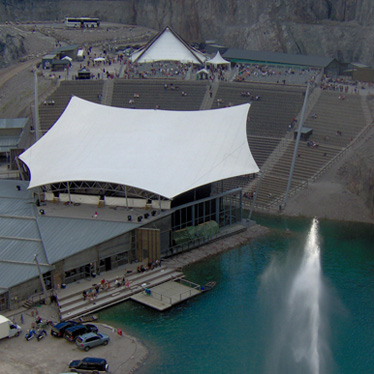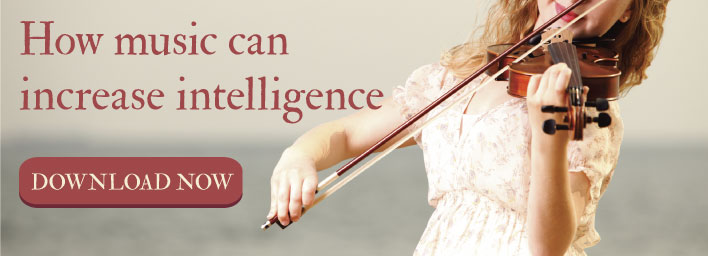10 Musical Venues You Have to See Before You Die

As someone with a serious appreciation for classical music, chances are you’ve been in the audience for your share of live performances. But, have you experienced a concert in any of the world’s most historic or interesting venues?
Some are architectural and artistic marvels. Others are cultural touchstones with a deep connection to some of classical music’s most brilliant and prolific figures. If visceral experiences are your thing, consider planning some trips to visit these must-see venus. Here’s the list. All you have to do is check them off!
- Long Before Mostly Mozart, or even Festival dei Due Mondi, there was Germany’s Bayreuth Festival, held at the Bayreuth Festspielhaus (Bayreuth Festival Theater). The festival was conceived by Richard Wagner, who wanted his operas performed in a building that suited his acoustic and aesthetic ideals. Epics like his trilogy “The Ring” could be performed in cycles – one part per day – and the audience would have an opportunity to interact with performers over the course of the festival. Despite political and financial setbacks, in 1876, two years after Wagner completed “The Ring,” the Bayreuth Festival Theater opened and an enduring tradition was born. If you make it to the festival, or visit Bayreuth another time of year, check out an even older hall in town, Margravial Opera House. The 500-seat venue features a bell-shaped auditorium of tiered wood boxes decorated with painted canvas.
- It’s entirely fitting that one of the world’s most famous and important classical music venues is in the country where Mozart was born and created his first compositions. The Vienna Opera House (Wiener Staatsoper) opened in 1869 with a performance of Mozart’s “Don Giovanni,” considered by some critics as the finest opera ever composed. Among the earlier highlights, in its second decade, the opera house, under the direction of Hans Richter, presented “The Ring.” Gustav Mahler succeeded Richter as Artistic Director in 1897, and served for the next 10 years. Subsequent directors in the venue’s first century included Richard Strauss, Clemens Krauss and Felix Weingartner. The building was seriously damaged toward the end of World War II and the auditorium was destroyed by fire after a bombing. However, the famed staircases, made with rare, polished Kaiserstein, and much of the marble interior survived. The building was restored after the war thanks to a public/private partnership that included U.S. aid appropriated to rebuild Europe.
- From Charles Darwin’s theory of evolution to transatlantic communication, more than 60 years of innovation and a wider celebration of the arts defines the Victorian Era. One of its most iconic monuments is the Royal Albert Hall of Arts and Sciences. Covered by a 600-ton glazed iron dome, it opened in 1871 in London, England. It is steeped in history: the 1877 Grand Wagner Festival, conducted in part by Wagner himself; World War II fundraising concerts, including an appearance by Winston Churchill; the premier of Benjamin Britten’s War Requiem performed by the London Symphony Orchestra in 1963, and a performance by The Beatles are some of the memorable events. Take a walk around outside to appreciate the facade, a mosaic frieze representing the advancement of the arts and sciences of all nations.
- There are some magnificent music venues around the world, but how many are referenced in the Bible? The Ephesus Great Theater is one. Built in the period 300-201 BC and expanded in the later Roman era, the Ephesus theater, in what is now western Turkey, is one of the main attractions in this ancient city. Carved into a slope of the Panayir mountain and overlooking the harbor, the outdoor theater seats 25,000. Though rebuilt more than once following ancient battles and an earthquake, much of the original architecture, including the skene (where the orchestra or chorus performs), emperor’s box, marble backed seats, and columns remain. It is an enormous structure with a street built on the theater’s third story that connects to another street. The theater is on a World Heritage Centre list of important cultural sites. If only those columns could talk.
- No student or instructor of classical music’s tour of Europe is complete without visiting Salzburg, Austria, where you can take a deep dive into everything Mozart. Start with the museum at Mozart’s birthplace, where you can see the violin on which Mozart first learned to play. One of his concert violins is on display as well. And that’s just the beginning. There are guided and self-guided tours in and around the three-story building where Mozart wrote his earliest compositions. Visit the Mozarteum, which includes the Great Hall and Viennese Hall music venues, an extensive library that includes some of Mozart’s hand-written manuscripts, and “The Magic Flute House,” so named because it is believed to be where Mozart wrote that famous opera.
- Home of the Mahler Festival, The Royal Concertgebouw, which opened in 1888 in Amsterdam, the Netherlands, perfectly replicated the finely-tuned acoustics of some of Europe’s best music halls of the era. The architect, Adolf van Gendt, was highly regarded for designing the city’s most prominent buildings. However, van Gendt was not an expert in optimizing designs for concert venues and set out to research architecture and materials used specifically to accommodate music. That led him to the Neue Gewandhaus concert hall in Leipzig, Germany, designed by Martin Gropius, and other venues. The sound quality in the Concertgebouw was so highly regarded that future renovations were carefully planned to not disturb features directly tied to the hall’s acoustics. The hall has hosted celebrated composers and performers from Mahler and Strauss to Vladimir Horowitz.
- Taking a hop across the pond, New York’s Carnegie Hall put a major pin on the map for a United States that was still cultivating its cultural chops. Its acclaimed acoustics are attributed in part to a careful study of existing world-class venues. That led to the design featuring a domed ceiling and smooth, elliptical interior. The sound quality was reportedly diminished after a 1986 renovation that included the removal of a concrete slab beneath the stage. However, subsequent work to restore the quality was successful, according to experts. Simply known as “The Music Hall” when it opened in 1891 with a five-day music festival, the venue was renamed in 1893 after famed industrialist and philanthropist Andrew Carnegiee, who financed the project. Six months later, it hosted Polish pianist Ignacy Jan Paderewski for his U.S. debut. Less than two years after that, the public was invited to hear a rehearsal of Dvořák’s New World Symphony before it premiered. In 1904, Richard Strauss conducted the world premiere of his Symphonia Domestica. Mahler, Tchaikovsky, Stravinsky and Gershwin are just a few of the early entries on a long roster of luminaries who propelled Carnegie Hall to worldwide prominence.
- Want to experience a music venue that is not only one of the coolest places to host opera, but literally cosmic? The Dalhalla amphitheater was created from a former limestone quarry located in Rättvik, Sweden. When an unusually large meteor impacted the area 360-380 years ago, it created what would become Lake Siljan and set in motion seismic changes that led to unnatural rock formations. It also exposed part of the interior of a forest not far from the lake that eventually invited limestone excavation. The 1991 discovery of the abandoned quarry there by former opera singer Margareta Dellerfors, who was scouting potential summer festival sites, led to the creation of one of the most unique venues, which opened in 1995. Nearly 200 feet below ground, the theater features nearly vertical rock walls that formed during the seismic events that create a natural reverb effect. That, and the composition of the former quarry’s floor and a carefully engineered stage provide a rare acoustic quality. Enhancing the experience is a moat separating the audience from the stage and a naturally occurring pool available to concert-goers.
- Nearly destroyed during World War II, but restored to its original splendor, La Scala Opera House in Milan, Italy, is one of Europe’s most romantic and compelling cultural destinations. It opened in 1778 with Antonio Salieri’s Europa Riconosciuta, which was not performed again for more than 200 years. A casino as well as a theater back in the day, La Scala was a venue where serious opera aficionados rubbed elbows with less ardent fans – whether they liked it or not. More than a concert hall, La Scala is now a multi-use performing arts center that includes a museum and offers an array of cultural and educational programs. When you’re not enjoying the opera at La Scala, Milan has an abundance of cultural destinations.
- We’ll wind up our tour back in Austria, at the Grosser Musikvereinssaal, or Great Hall of the Musikverein, home of the Vienna Philharmonic Orchestra. Considered one of the finest venues in the world for its acoustic qualities and visual beauty, it opened in 1870. Clara Schumann performed the first concert there. The rectangular-shaped “shoebox” hall and other features, such as the suspended, wooden ceiling, balconies, and caryatids were meticulously planned to conduct and reflect sound. Other acoustic features include a hollow wooden floor designed for optimal acoustics. Along with Boston’s Symphony Hall and Amsterdam’s Concertgebouw, it is considered one of the world’s three best venues based on sound quality. Want to ring in the new year with a memorable experience? Musikverein and the Vienna Philharmonic host the annual Vienna New Year’s Concert.
So, did we get you to reconsider your bucket list? There are so many great venues to visit in cities that offer a wealth of other sight-seeing opportunities. Depending on where you reside, some might be a long distance away. But, if you can arrange to visit even just one of these noteworthy destinations, we promise you won’t regret it!
Top photo of the Dalhalla by Johannes Scherman, courtesy of Wikicommons


